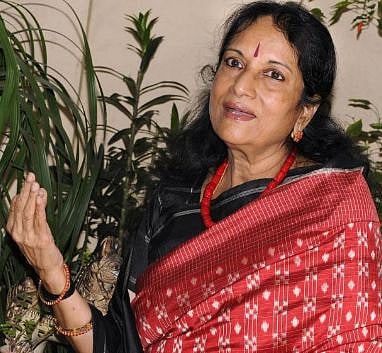The other Lata, beyond the songs
Her personal ambition and ruthless ways are supposed to have stymied the careers of Suman Kalyanpur, Vani Jairam, Mubarak Begum and Sudha Malhotra among other singers

As I write this piece, all my social media accounts—be it Twitter, Instagram, Facebook or even LinkedIn—are overflowing with images of, and words on, Lata Mangeshkar. Even from distant shores and foreign cultures. Former president of Afghanistan, Hamid Karzai, tweeted that Lata Mangeshkar, with her voice, filled millions of hearts with joy. “Her melodies are universal and forever,” he wrote.
So, individual playlists are proliferating too, tough as it is to pick up one or two or even a handful of songs from her mammoth body of work.
But there was another side to Lata beyond the melodies that needs to be spotlighted, celebrated and critiqued as well. And it is not just to do with how much she loved diamonds, photography and cricket. It’s worth noting that Lata started out as a kid, a mere 13-year-old, in the industry and made her way to the very top. She was able to earn rare power and stature in a vastly exploitative space, known to be particularly unwelcoming for women.
In fact, those were the times when women from the so-called respectable families were not encouraged to think of cinema as a vocation in life. Lata didn’t just create a space for herself but ruled a world dominated by men for over seven decades. A rediff.com piece by veteran music columnist and author Raju Bharatan states that in the 60s she was earning as much as the other top singer of the times, Mohammad Rafi: Rs 5000 per song.
She was among the stars who paved the way for the film industry and playback singing getting to be regarded with respect and dignity in the years to come.
Indian film industry is notorious for gravitating around actors and directors. With her success, Lata didn’t just help in getting due recognition for playback singers, she was also instrumental in fighting for singers’ rights to royalty for a song.
As per the Bharatan piece, she even ended up crossing swords on this issue with fellow playback star Mohammad Rafi. Lata was demanding half a share from the five per cent royalty being given by the producers to music directors. Rafi, however, was content with just the one-time, fixed payment for any song.

It led to an argument between the two during the recording of “Tasveer teri dil mein” for Maya (1961) and continued till composer Jaikishan brokered peace. There was standoff on the royalty issue with many leading producers as well. However, Lata’s resolute stand on the issue paid off eventually and ensured a fixed annual source of income, however big or small, for many old-timers and disregarded musicians.
The force that she was, there have also been allegations of monopolistic ways. That in taking on patriarchy, she succumbed to cutthroat competitiveness herself. There was the infamous rivalry with sister Asha Bhonsle, something denied by Bhonsle herself. But it is said to have inspired Sai Paranjape to make Saaz in 1998, starring Shabana Azmi and Aruna Irani, in key roles.
Her personal ambition and ruthless ways are supposed to have stymied the careers of Suman Kalyanpur, Vani Jairam, Mubarak Begum and Sudha Malhotra among other singers. I wouldn’t have the evidence or details, but these assumptions have made me wonder if monopoly and manipulation aren’t endemic to stardom itself. Then why are male stars not held accountable for their ruthlessness the way women are? Why is ambition in women unwelcome?

The most resounding criticism of Lata of late has been for her political opportunism. The same Lata who sang the iconic C Ramchandra-Kavi Pradeep composition “Aye mere watan ke logo” in the presence of the then PM Jawaharlal Nehru, also sang the poem “Saugandh mujhe is mitti ki, main desh nahin mitne dunga”, that PM Narendra Modi had recited in a rally in Churu, Rajasthan, to mark Indian air strikes in Balakot, Pakistan, in 2019.
She is supposed to be the earliest of stars to validate saffron politics and was called out for being an RSS sympathiser, not just tweeting birthday wishes to RSS chief Mohan Bhagwat but also revealing her family’s strong links with Vinayak Damodar Savarkar on Twitter. In his tribute L.K. Advani spoke about Lata singing the signature tune of his Rath Yatra.
In this context, does Lata’s rendition of “Allah tero naam, Ishwar tero naam” become meaningless? Or does it acquire an added, ironic significance? Is the song bigger here or the singer? In the passing away of Lata Mangeshkar, the need (or not) to separate the art from the artist comes up for debate yet again.
Follow us on: Facebook, Twitter, Google News, Instagram
Join our official telegram channel (@nationalherald) and stay updated with the latest headlines
